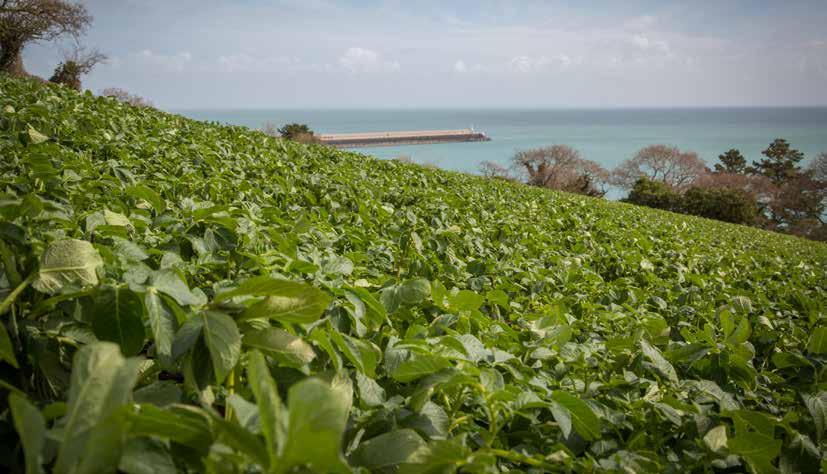
3 minute read
Technology at the Jersey Royal Company
WITH MIKE RENOUARD BUSINESS UNIT DIRECTOR (AT JRC)
One of our newest LEAF Demonstrations Farms, the Jersey Royal Company (JRC), has been awarded ‘Best Use of Technology for Sustainability’ in the Digital Jersey Tech Awards 2020, competing with a range of industries including finance, renewable energy and tech companies. Their win was a result of developing a IoT remote sensor system, providing up-to-the-minute intelligence on weather conditions to predict the growth of their Jersey Royal potatoes and tea crops covering over 9,000 vergées and accurately determining crop needs in terms of irrigation, fertiliser and PPPs.

WHY IS IT NEEDED?
JRC farm approximately 1,600 fields on the Island of Jersey with each individual field around 2 acres, making accurate application of inputs challenging. The weather, and particularly rainfall, also varies considerably within a day and across the Island. Irrigation was largely based on guesswork and there was difficulty in preventing seed storage temperatures becoming too warm. JRC therefore identified the need for greater monitoring and application accuracy and purchased 20 sensors through the Countryside Enhancement Scheme.
Remote air and soil temperature probes, soil conductivity and rainfall gauges record in-field conditions across the Island which then feeds into JRC’s in-house IoT dashboard to determine rate of crop growth and plant needs. Data is sent to the platform every minute, ensuring the technical and farming teams have the most accurate data possible. In addition, remote temperature and humidity sensors in the seed stores record the daily day degrees accumulated (the average number of °C above 4°C in a 24 hour period) by the seed tubers. In order for these devices to communicate to JRC’s central hub, the company has developed a low frequency LoRaWAN (Long Range Wide Area Network) across the Island that uses very little power and securely delivers two-way communications. Eight gateways have been set up in various locations, covering 75% of the Island. Now this LoRa network has been established, sensors are simply moved when needed and can be utilised by other businesses i.e. by Jersey Dairy for sensors in water tanks. JRC has made changes to improve Nutrient Use Efficiency in the last 4-5 years by placing fertiliser rather than broadcasting. Since then, nitrogen application has reduced by 15%. Jersey has historically recorded high nitrate levels in its waters, requiring derogation from the EU. However, since this change in fertiliser application, levels have been decreasing to a point where this derogation is no longer needed. JRC works with Jersey Water to improve raw water quality and in developing a catchment pollution risk model for pesticides with the James Hutton Institute. With greater optimisation using data collected by remote sensors, JRC looks to further increase nutrient use efficiency, reducing input costs and enhancing yields whilst mitigating environmental impact. With instalment of sensors and planting of potatoes in the last few months, this will be the first season where data will inform inputs on a ‘needs only’ basis to avoid over-application and optimise crop growth and pest and disease control.

WHAT NEXT?
The next stage of software development will look to advise and assist in decision-making to further refine accuracy of applications rather than based on historical research-based applications. JRC’s ambition is to have 100150 sensors across the Island that are able to record a variety of metrics to understand how much input is being wasted and how much is actually needed. They also hope to refine current measurement models and expand data collection to include soil organic matter and soil types. Developing partnerships on the Island and sustained cooperation with the Government of Jersey will continue to be key for pursuing increased efficiencies and reduced environmental impact.





